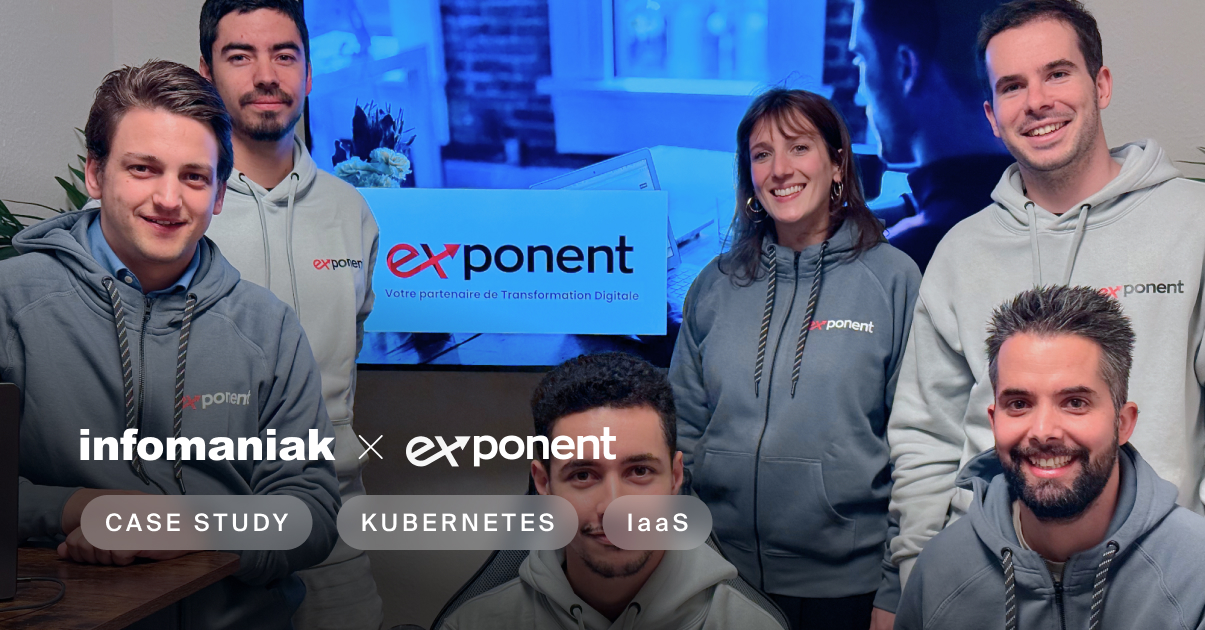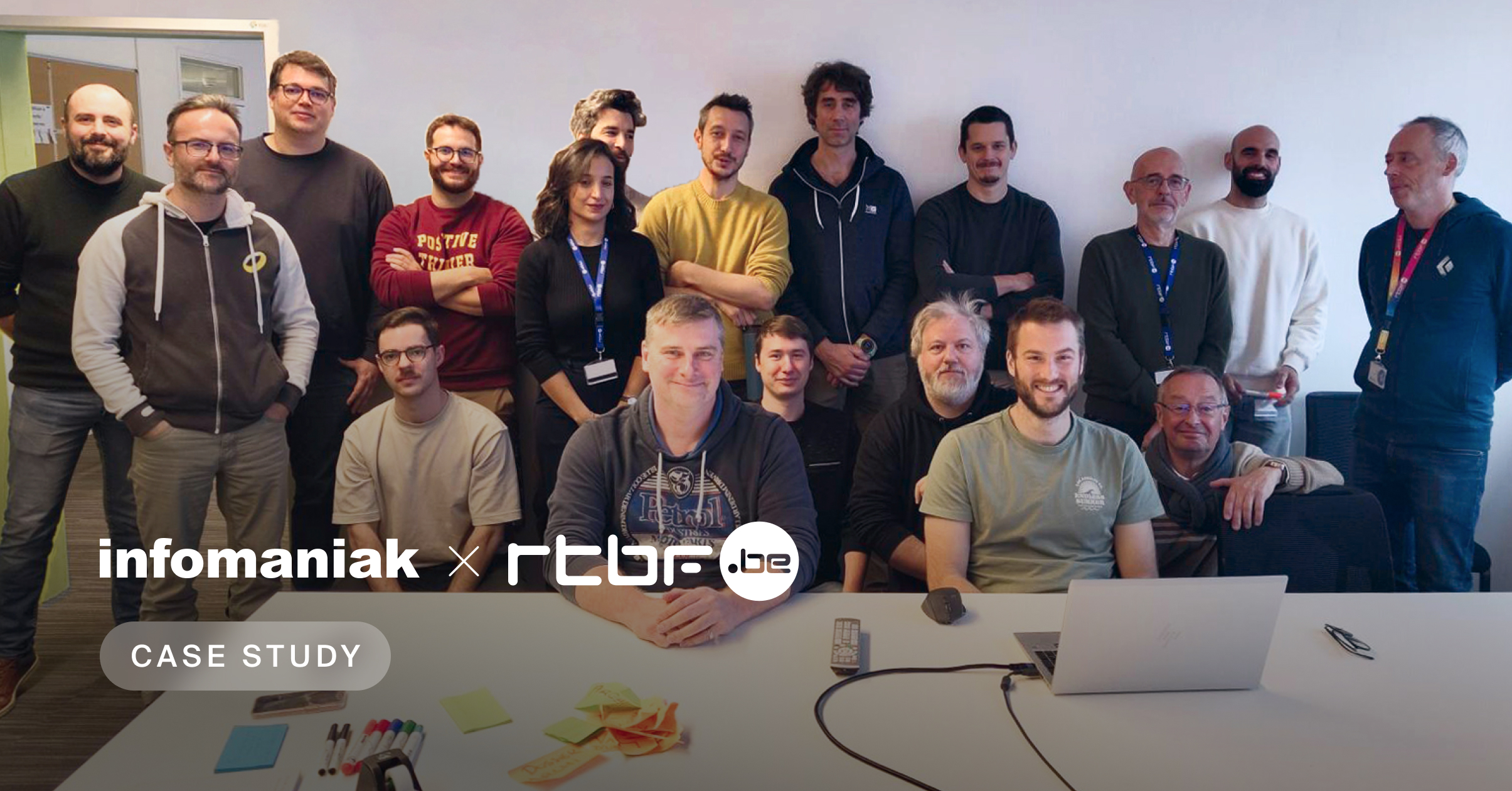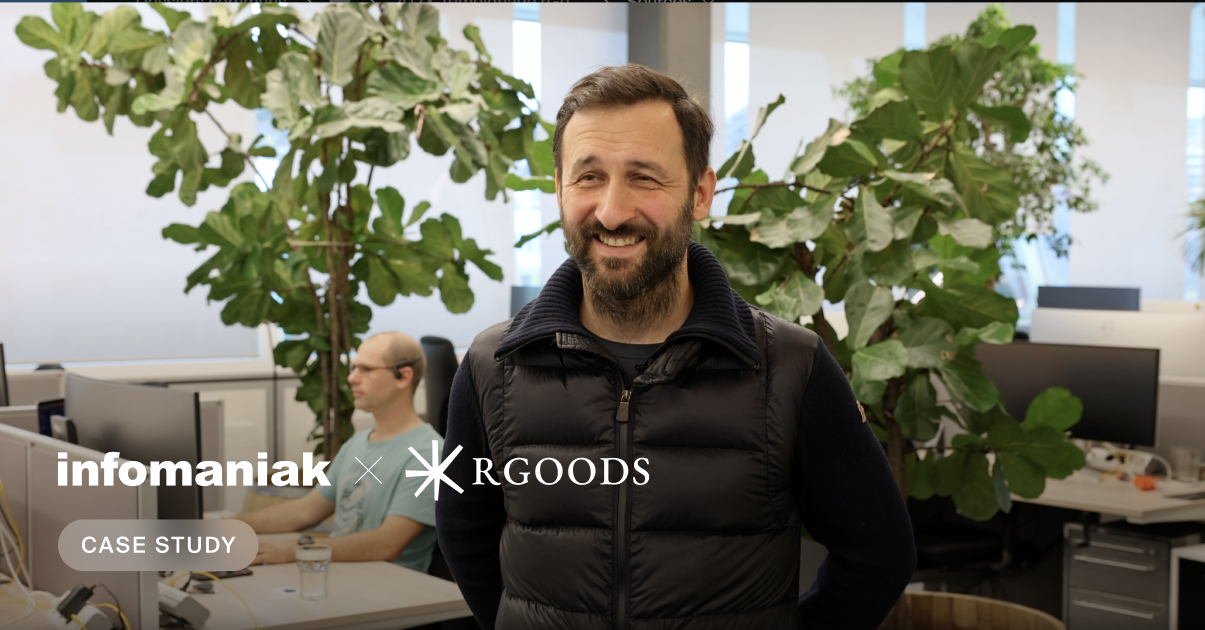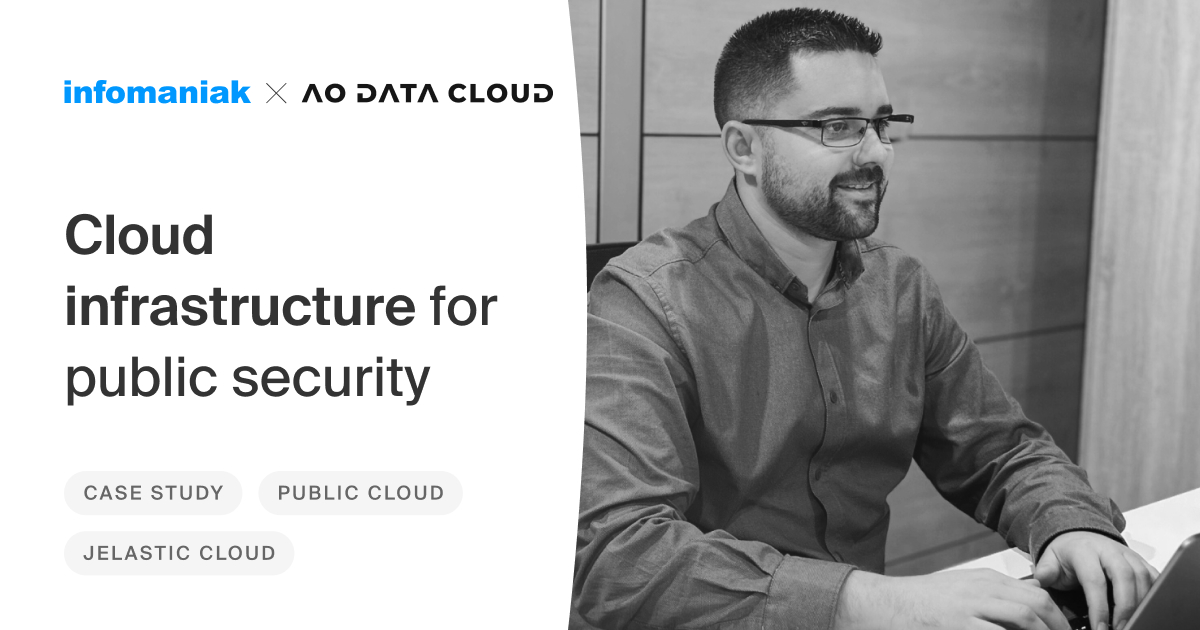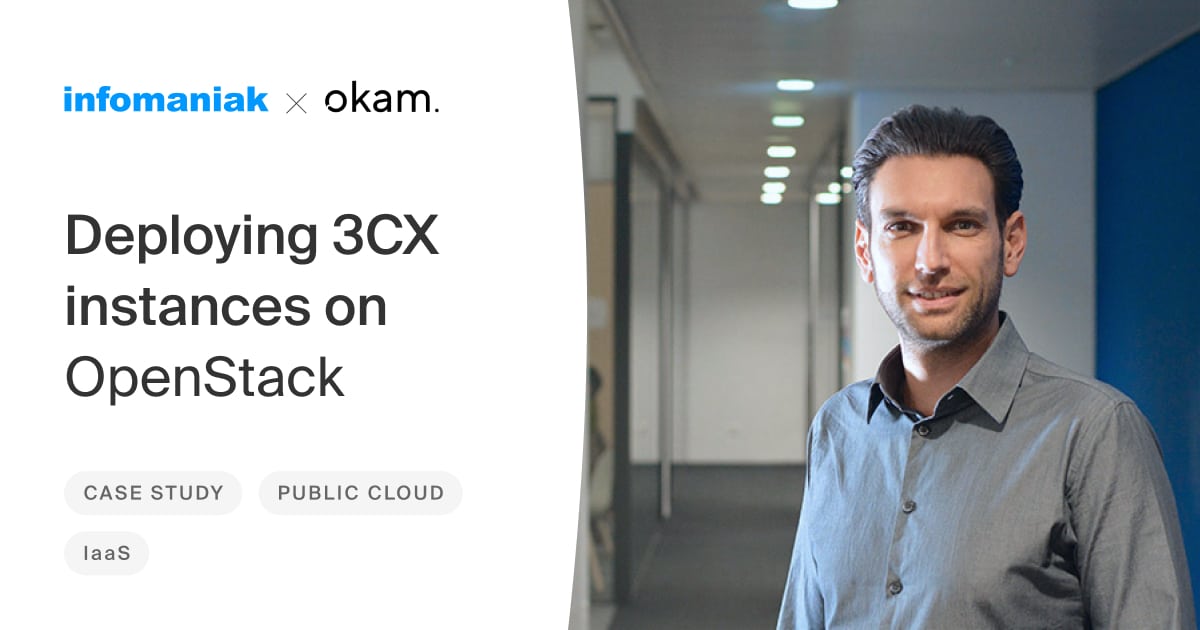Digital events are disrupting the way we participate in encounters. They’re also revolutionising the way in which artistic, sporting and professional productions will be imagined going forward. To keep up with the new possibilities brought about by streaming in the event industry, our developers are working with producers on Infomaniak Tickets.
The team at Geneva’s Théâtre Confiture has been using Infomaniak’s ticketing and distribution tools to devise new ways of reaching audiences. Its producer Gaspard Boesch explains how these tools facilitate shows offering a completely new experience.
Gaspard, your LinkedIn profile says you’re the company’s co-artistic director AND head of streaming. What exactly does that mean?
My LinkedIn? I have to admit that it’s a kind of fantasy CV to which I should add all the projects I’ve done, but in the end I only use it as a directory to find people. ?? I’ve been producing shows in the performing arts sector for 30 years. I work in theatre, but I also trained as an interior designer, so I’ve always been interested in technology. I wear both hats as AD and head of streaming because nowadays these two aspects go hand-in-hand.
What’s changed in the field of entertainment?
The Covid-19 crisis has been teaching the entertainment sector how to live, not without an audience, but with empty venues. That was the first thing to change.
The situation obliged us to do things differently. Once the initial shock wave passed, the authorities required us to reinvent ourselves, something we knew all about since it’s a cornerstone of our business. We’ve always tried to incorporate new trends and new technologies in terms of video, lighting, set design, mapping, and so on.
The second thing to change was that people began using technology in events. Platforms developed at an accelerated pace to overcome system paralysis. That’s what happened with all the tools such as streaming, video-conferencing, online ticketing, etc. – all these tools that put us in touch with audiences.
Talking of which, how is streaming changing how shows are produced?
Let’s first define what we mean by streaming.
So start off with, we had television that broadcast arts programmes unilaterally. You could say that TV virtualised arts programmes, long before the term became commonplace. But with streaming, what we’re virtualising is not the object or the actor, but the audiences watching, their relationship with the performance. Potentially, they can access from anywhere and interact with their comments immediately.
Unlike TV, streaming gives us a direct contact with the viewer; it becomes an extension of live art. Streaming now allows us to re-imagine how people meet to go to a show.
Why did you choose Infomaniak Tickets for your ticketing needs?
Our job is to offer access to culture, while yours, it seems to me, is to offer access to technology.
Given what we’re facing in terms of challenges, it seemed a a match made in heaven ! As you have tools that are very easy to set up for a production, we’ve been using them for our website and our ticketing for some time now. But this time we weren’t just going to use your services, we needed to create something new.
As you’re a local to us, I was able to meet your people face-to-face to talk about the project.
We were looking to create a genuine encounter with the audience. It all starts at the ticket office. Scripts had to be coded to deliver access to a private stream at a specific time at which everyone, the viewers and us, would meet. This is how we managed to maintain a live feel to the encounter. There again, streaming’s an extension of live art.
Will streaming ever replace the traditional immersive viewing experience of audiences?
Streaming is in its infancy and as things stand, let’s be honest, it’s a digital crutch. But if I asked you whether you’d prefer to walk with crutches or not to walk at all, the answer’s obvious. We want to find the most interesting way to work with streaming. In terms of the experience, we believe that the role of streaming will be somewhere between “the substitute” and a return to “the immersion we used to have”. It’s this new realm of possibilities that we’re keen to explore.
How did our ticketing solution contribute to these changes?
The ticketing acted as a kind of culture conduit by facilitating access to the show. It’s also evolved to provide services that are dedicated to the show. Firstly, with worked with Infomaniak’s developers on an innovation: integrating the individual issuing of tickets into a stream. After that, we explored how a get-together to see a show worked. This get-together is about friends making arrangements to see a play together. They’ll want to meet for a drink before the show and have a drink and chat about the play afterwards.
So we built videoconferencing into kMeet to enable the audience to meet with the actors at the end of the show in a virtual theatre bar.
It was a first, and we’ll continue to explore the possibilities, for instance with lounges so people can move between groups, just as they would in real life. Here again, the ticketing is an extension of our living art.
But the groups can be more than two or three friends: we’ve also organised streamed performances around screens in nursing homes, where dozens of people came together to watch the show. We weren’t physically there with them, but we all got together at the same time. It means the show reached groups of viewers, who were only able to attend thanks to the system set up in collaboration with Infomaniak.
Are you planning any other innovations with Infomaniak Tickets?
Yes. We realised that what we were doing was primarily to save our business, but then we realised that it was a taste of things to come in the entertainment business. The pace of adoption of technology is such that these tools will seem obvious within a few years.
Streaming will never replace face-to-face, but it is complementary to it. It becomes an added value.
Being able to see a repeat of a show you’ve already attended is only one step away. Still relying on Infomaniak’s services, we’re in the process of imagining the possibility of incorporating video on demand (VOD) into the ticketing offer.
What does it take to integrate streaming into a show?
It depends on the structure.
For a comedy club, for example, one camera’s enough. We use more cameras to get a wider field of view showing the whole stage plus two more PTZ (Pan Tilt Zoom) cameras for close-ups. This makes for a more immersive experience.
With this type of equipment, the technical team can direct the shots using the computer in the control room. This entry-level system costs around CHF 4000. It’s an affordable price for a set-up like ours, but it can’t replace a technical team with camera operators for larger venues like, say, the Grand-Théâtre.
Does all this call for particular skills?
In the past, I would have said yes. But these days, everyone’s taking pictures with their smartphones. The quality level is much better than before and the tools are easier to handle.
All you need to get started is a computer and a subscription to Infomaniak.
I can see streaming becoming part of everyone’s continuing education. The teams have already been familiar with video, so streaming will be an extra string to their bow.
How did the launch of your play Misery go?
We were originally going to premier it at the end of March 2020. We were three days away from the opening night when the news came through: the theatres had to close until further notice. We were ready to get going at short notice, but the lockdown dragged on. With no horizon for a return to normality, we realised we wouldn’t be able to perform the play in the presence of a live audience.
Infomaniak furnished us with a test line, which is when we thought we should grab the opportunity.
Following a period of brainstorming to imagine what a remote meeting with audience could be like, we approached Infomaniak to inform them of our needs.
We came up with simple user requests that they were able to translate into code. Two months of work and fine-tuning later, the ticketing system went live and we were able to reach around 1500 viewers: an excellent result, especially for a premiere.
Now we realise that this represents an immense potential. As always, there are those who are against the idea before they even try it, and there are those eager to experience this new world with us. At the end of the day, it’s a matter of having faith in their theatre. If they’re offered a writer or performer whose shows they’ve already seen, they’re tempted. We have tons of data to log and analyse. It’s now up to us to understand how to improve the experience and continue to innovate.
Infomaniak Tickets is continuously evolving.
Your ticketing solution will undergo major changes on the back of its growing popularity. Infomaniak Tickets will gradually integrate our streaming service, and eventually VOD. We’ll also be adding professional features with kMeet to create courses and conferences that are accessible from Infomaniak Tickets.
Infomaniak Tickets is free for free events. Don’t hold back – give this ticketing solution a try
RTBF chooses Infomaniak for a high-availability infrastructure dedicated to more than 2 million users
Monday November 11th, 2024
Case study: RGOODS develops international NGO shops using Infomaniak’s cloud solutions
Thursday March 28th, 2024
Case study: Okam automates deployment of the 3CX communication platform in the Public Cloud
Tuesday December 12th, 2023

 Français
Français Deutsch
Deutsch Italiano
Italiano Español
Español